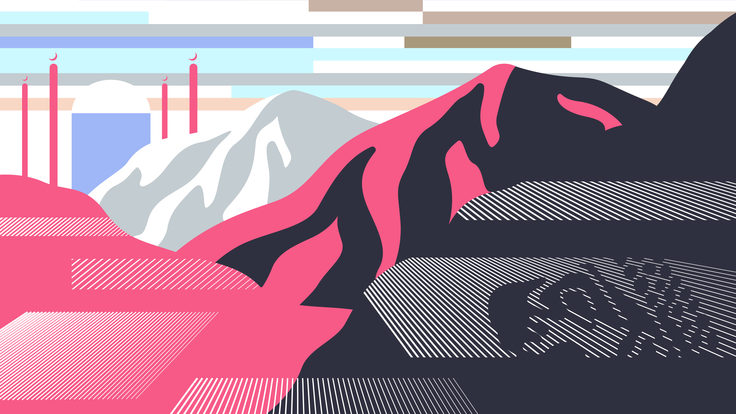In 1887, physicists Albert Michelson and Edward Morley performed one of physics’ most famous experiments (at Case Western Reserve University, coincidentally, across the street from where this article was written). Unlike other important experiments, they didn’t find what they were looking for, but unexpectedly their “null” result prepared the way for the theory of relativity.
Sometimes researchers deliberately set out to generate null results—while on the lookout for something new. One type of experiment is looking for deviations from Einstein’s general theory of relativity.
“General relativity has been the staple of gravitational understanding for 100 years,” says Katie Chamberlain, a physics student at Montana State University. “We have to rule out the potential for other existing theories to come in and replace [it].”
Many alternative theories of gravity are out there, designed to explain various phenomena or fix general relativity’s famous incompatibility with quantum theory. Some of these predict differences in the behavior of gravity that can be tested in the lab.
One experiment examined precision measurements of the distance between Earth and the moon. Another recent test involved superconducting gravimeters, which measure how strong gravity is in various places on Earth’s surface. If there are gravitational effects not described by general relativity, they might show up in those experiments: the highly coveted results known as “new physics.”
The null result tells us where new physics is not. That limits the places that one can continue to look for new physics.
In these cases, everything was perfectly in line with general relativity, but that doesn’t mean the experiments were failures.
“It isn’t especially a disappointment,” says Jay Tasson of Carleton College, who worked on the superconducting gravimeter analysis. “The null result tells us where new physics is not. That limits the places that one can continue to look for new physics.”
In other words, even an experiment in line with general relativity tells us something, in this case that any theory—including theories not yet born—with results at odds with these results (as long as they hold up) must be wrong.
“Progress in this field is often measured by [looking] with better sensitivity than anyone has looked before,” Tasson says
Einstein’s happiest thought
Though general relativity is mathematically complicated, it’s based on some simple concepts. Among those: Objects experiencing only gravity don’t feel any force acting on them. That’s how someone aboard the International Space Station can float as freely as if there were no gravity at all, even though the force of gravity at that orbit is only about 10 percent less than it is on the surface of Earth. Einstein called this realization “the happiest thought” of his life.
A consequence of this happy thought is “local Lorentz invariance.” “Local” means “approximately at a single point in space,” and “invariance” means two experiments performed under equivalent conditions should return the same results. “Local Lorentz invariance” means (for example) two experiments at the same position should be the same if one is rotated by 90 degrees compared with the other. While real experiments take up more than a single point in space, researchers compensate for that through precision measurements and understanding how the size of their experiment affects results.
Several theories of gravity predict violations of local Lorentz invariance, including string theory and other quantum theories of gravity. Most of these violations occur at smaller length scales than current experiments can reach, but some effects might “leak” into testable regimes.
Rather than test a particular alternative theory, gravitational physicists worked out a general framework for modeling deviations. The framework consists of numbers that are all zero in general relativity but take on various values depending on which alternative theory is doing the predicting.
“Currently there are a lot of constraints on different modified theories of gravity,” Chamberlain says. “As we’re able to explore more relativistic spacetimes with higher sensitivities from our instruments, we’ll be able to place much tighter constraints.”
Testing, testing
Astronauts starting with Apollo 11 left “retroreflectors” on the surface of the moon that reflect light directly back toward the source. Astronomers on Earth send laser beams through telescopes at those retroreflectors and time how long it takes the light to come back to the observatory. These “lunar-ranging” experiments are some of the best tests of general relativity we have.
“The usefulness of the lunar laser ranging experiment is mainly due to its very precise data,” says Adrien Bourgoin of the University of Bologna. He points out that these experiments are precise on the level of centimeters, compared with the 400,000 kilometer distance between Earth and the moon. That’s good enough to see possible deviations from general relativity.
For example, if gravity violates local Lorentz invariance, it might affect the travel time of light differently when the moon is aligned with the sun (full and new moon) than when the moon and sun are at right-angles with respect to Earth (half-moon). That’s a large-scale version of rotating the experimental apparatus.
The first lunar distance test began in 1969, with many follow-up experiments. Bourgoin and his colleagues looked at 13 tests involving five different observatories.
The lunar retroreflectors were intended to test relativity, but the Earth-bound superconducting gravimeters that Jay Tasson and his colleagues used in their relativity tests are primarily there to study variations in our planet’s gravity due to rock density, earthquakes, the moon’s pull, and so forth. These instruments consist of metal spheres cooled until they become superconducting, which means they can be levitated using electromagnets. By keeping them levitating at precisely the same height, the instruments can measure the gravitational field at that position.
As with lunar ranging, these gravimeters provide a lot of precise data, some going back over a decade. Tasson and his collaborators compared results between multiple groupings of gravimeters around the world to look for any variations that can’t be explained by ordinary phenomena.
Both sets of researchers concluded there are no violations of general relativity that can be detected at this level of precision. In both cases, though, these data are improvements over what came before, with the lunar-range experiment showing as much as a thousandfold increase in precision over prior measurements.
“Any set of experiments that you can do to test general relativity are going to be complementary to each other,” Chamberlain says.
In particular, her research looks at how future gravitational-wave observatories might spot deviations from general relativity—including Lorentz invariance violations. Unlike the Earth and moon tests, these gravitational waves come from the strongest gravity we know: colliding black holes and neutron stars.
“We need very strong signals to be able to tell the difference between a Lorentz-violating gravitational-wave form and a gravitational-wave form that looks like it should in general relativity.”
In the meantime, nobody is terribly surprised to see experiments perfectly in line with Einstein’s theory.
“I’m pleased that the measurements are null,” Bourgoin says. “If not, I’ll still be working on the subject wondering if the measurements come from computational errors or if it is real.”
He recalls the experiment from 2011 that deceptively appeared to show neutrinos traveling faster than the speed of light, a result that vanished under later analysis. A seeming violation of local Lorentz invariance would also likely mean measurement snafus rather than a fundamental discovery.
But there’s always that chance. And, like the Michelson-Morley experiment, the “nothing” results tell us where new physics may or may not be hiding.







